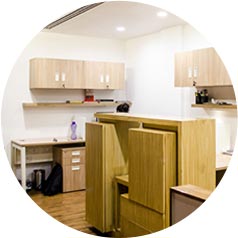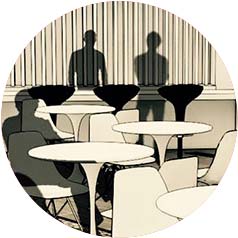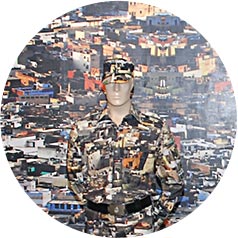In search of white space
Cramped, overcrowded and dense, the Indian city is a sweltering cauldron of humanity that seems to palpably boil in the sweaty odours of summer, the heat making more putrid the air that occupies the slivers of space between streets, the narrow gaps between buildings and the no-more-than-arms-length distance between windows of neighbours. The city is getting claustrophobic as “one room” tenements housing a majority of our urban masses compete with unauthorised commercial structures sprouting like promises in an election speech.
There’s no respite for the sun-scorched eye as every inch is occupied, tier upon tier, building upon slums, high-mid and low-rise emerging like ugly protrusions. Imagine an unending picture without mount or frame, or, worse, a collage of patterns intersecting, overlapping and random. The Indian city is imploding in acts of mindless and short-term urban planning.
Where is the white space in this canvas of construction — the space that allows one to savour the essential elements of the city, its architecture, its opaque volumes and its mundane life. White space is what allows us to celebrate the city as a collage and not see it as clutter. It’s where the Mumbaikar or theDilliwallah steps back, gets room to see the city from outside rather than “unseeing” it from within, where he is more voyeur and less participant.
It’s not about making the city uniform like Santorini in Greece or even the pink remnants of Jaipur, but about creating spaces where we may rejoice in our disparity. This white space is not a minimalist Zen-like haven where we build less; cities like Tokyo, New York and even Singapore have a higher densities but they also allow a sense of quietude. Our cities could do with some of this to balance their kaleidoscopic vibrancy.
The park and its bench; the open maidan and fountain; the waterfront, deck and bridge; the promenade, gallery and subway — all these make for the perspective of “white space”. It’s not just about the spaces we use but also about the spaces that rise between spaces to create columns of sky and green, buildings that arrange themselves into beautiful skylines, opening roofs to courts that shape the sky, designing voids within and between that form a contrast with the saturated concrete jungle. They provide the mouthfuls of air, the gasp and the gulp that draw the line between existing and living. The Indian urbanspace needs these space not just at its seams and fringes or only in its elitist centres but so its teeming populace can exult.
White space is what holds up a mirror to ourselves. Where we can slow down to gaze into the eyes of the seemingly unimportant, something we have forgotten to do in the ride on the urban travel-ator that runs on time and task. Perhaps it’s time we got off the “chalta hai” bandwagon, even if for a few moments, and stood in the shelter of this white space and focussed on broken sidewalks, peeling billboards, paan-stained stairwells, dengue-ridden garbage bins, dusty shanties and asked ourselves a simple question…what do I see?
The need to insert white space may seem inconsequential and meaningless but it is the equivalent of Aamir Khan’s Satyamev Jayate. It is a feature that applauds “real” values and courage; it is that mirror which enables us to see ourselves for who we are and then dare to become the people it celebrates. White space is where hope is enabled to breathe.
— Suparna Bhalla
Published on May 19th, 2012




























